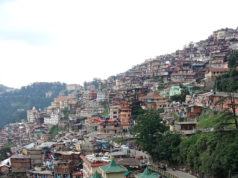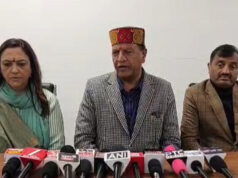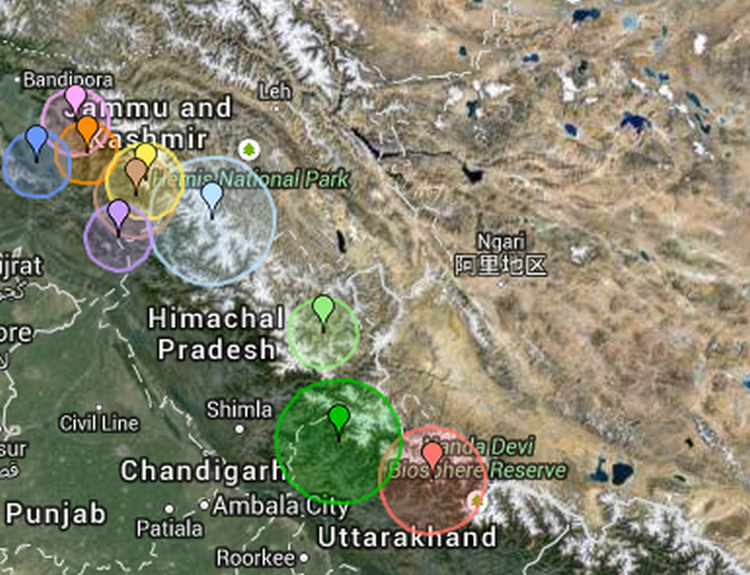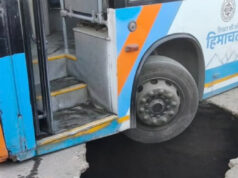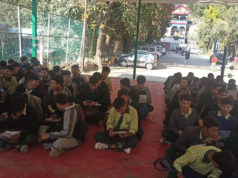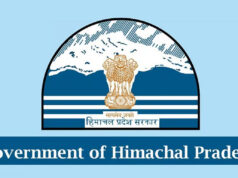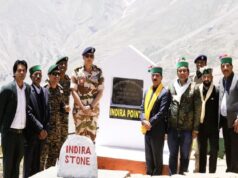Glacial Lake Outburst Floods: Historical Incidents and Current Precautions in Himachal
Reckong Peo – Glacier lakes have posed a significant danger to the Himalayan region, prompting a disaster management team to set out to Kashang in Kinnaur district. The team is investigating potential hazards from natural lakes formed by glaciers in the Sangla Kande region. SP Kinnaur Abhishek S flagged off the team on Tuesday. The team will first inspect a glacial lake at an altitude of around 4300 meters in Kashang, assessing potential future risks if the lake were to burst. Their findings will be compiled into a report for the Kinnaur administration.
This initiative comes after large lakes began forming in Sangla Kande, including Kashang, due to glacier falls last winter. The Kinnaur administration has been monitoring these lakes closely to mitigate possible dangers and minimize the risk to life and property.
Historical Context of Glacial Lake Outburst Floods (GLOFs)
Glacial lakes, formed by retreating glaciers, are dammed by moraines—accumulations of rock, boulders, and debris. When these lakes overflow or their dams fail, GLOFs can occur, causing significant downstream damage. The Indian Himalayan region is particularly vulnerable, with numerous incidents highlighting the destructive potential of these events.
For instance, the 2013 Kedarnath tragedy in Uttarakhand, triggered by a GLOF from the Chorabari glacier, resulted in over 5,000 deaths. Similarly, the 1981 Kinnaur Valley floods in Himachal Pradesh caused widespread devastation. The increased frequency and intensity of these events are attributed to climate change, which accelerates glacier melt and lake formation.
In the year 2000 and 2005, natural lakes in the hills of Tibet burst, causing floods in the Sutlej and Spiti rivers. The excessive water flow resulted in the loss of many lives and extensive damage to government and non-government properties in riverine areas such as Kinnaur, Rampur, Tattapani, and Bilaspur. The floods also led to the collapse of several bridges, cutting off Spiti, including Kinnaur, from road access for several months.
Factors Contributing to GLOFs
GLOFs can be triggered by a variety of factors, including heavy rainfall, rapid snowmelt, landslides, and seismic activity. The unstable moraine dams, often composed of loose, unconsolidated material, are particularly susceptible to failure under these conditions.
Climate change plays a significant role in increasing the frequency of GLOFs. As global temperatures rise, glaciers are melting at an accelerated rate, leading to the formation of larger and more numerous glacial lakes. This not only increases the volume of water contained in these lakes but also makes the moraine dams less stable, heightening the risk of catastrophic outbursts.
Mitigation Efforts and Future Precautions
Recognizing the growing threat, the Indian government has initiated several measures to tackle GLOFs. These include establishing high-altitude meteorological and discharge stations equipped with advanced technologies like Synthetic Aperture Radar (SAR) for early detection of changes in glacial lakes. SAR technology allows for continuous monitoring of glacier dynamics and lake levels, providing crucial data for early warning systems.
Collaborative efforts among various agencies aim to enhance data sharing and improve hazard analysis and response strategies. The National Disaster Management Authority (NDMA) has been actively involved in creating comprehensive GLOF risk management plans, which include mapping vulnerable areas, setting up early warning systems, and conducting community awareness programs.
Additionally, the Defense Geo-informatics Research Establishment (DGRE) is working to expand the network of Automatic Weather Stations across vulnerable states, including Himachal Pradesh and Uttarakhand, to forecast avalanches and landslides. These efforts are part of a broader strategy to develop effective GLOF risk management and early warning systems.
Community Involvement and Preparedness
Local communities play a crucial role in disaster preparedness and response. The Himachal Pradesh government has been conducting training programs to educate residents about the risks associated with glacial lakes and the importance of early evacuation in case of a potential GLOF. These programs aim to build resilience and ensure that communities are well-prepared to respond to emergencies.
As the Kinnaur disaster management team conducts its crucial investigation, it underscores the pressing need for continuous monitoring and proactive measures to address the risks posed by glacial lakes in the Himalayas. With climate change exacerbating these threats, coordinated efforts and advanced technological interventions are essential to safeguard communities and mitigate the impacts of future GLOFs.


